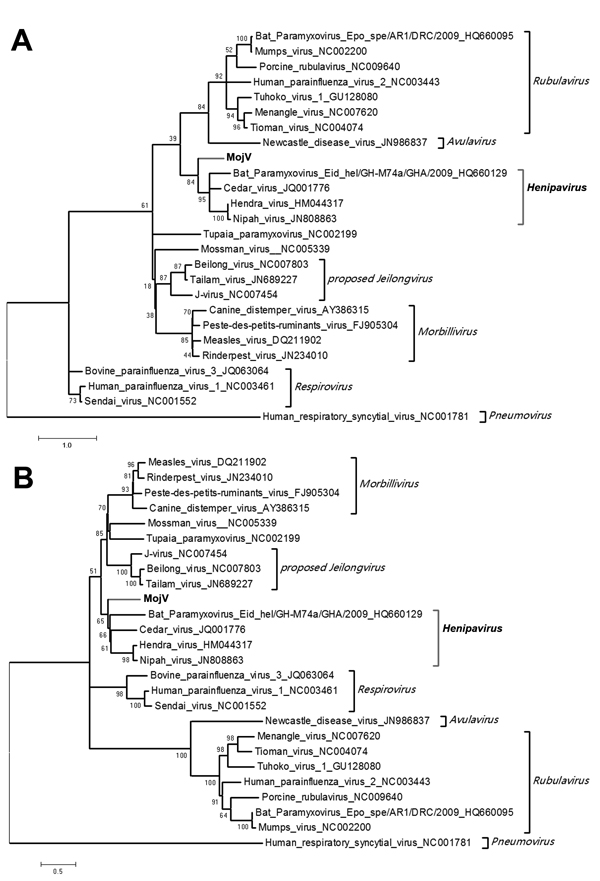Volume 20, Number 6—June 2014
Letter
Novel Henipa-like Virus, Mojiang Paramyxovirus, in Rats, China, 2012
Figure

Figure. Phylogenetic trees based on the nucleocapsid proteins (A) and large proteins (B) of Mojiang paramyxovirus (MojV) and other previously reported paramyxovirusesBold font indicates MojV and Henipavirus sppScale bars indicate nucleotide substitutions per site.
1These authors contributed equally to this article.
Page created: May 19, 2014
Page updated: May 19, 2014
Page reviewed: May 19, 2014
The conclusions, findings, and opinions expressed by authors contributing to this journal do not necessarily reflect the official position of the U.S. Department of Health and Human Services, the Public Health Service, the Centers for Disease Control and Prevention, or the authors' affiliated institutions. Use of trade names is for identification only and does not imply endorsement by any of the groups named above.